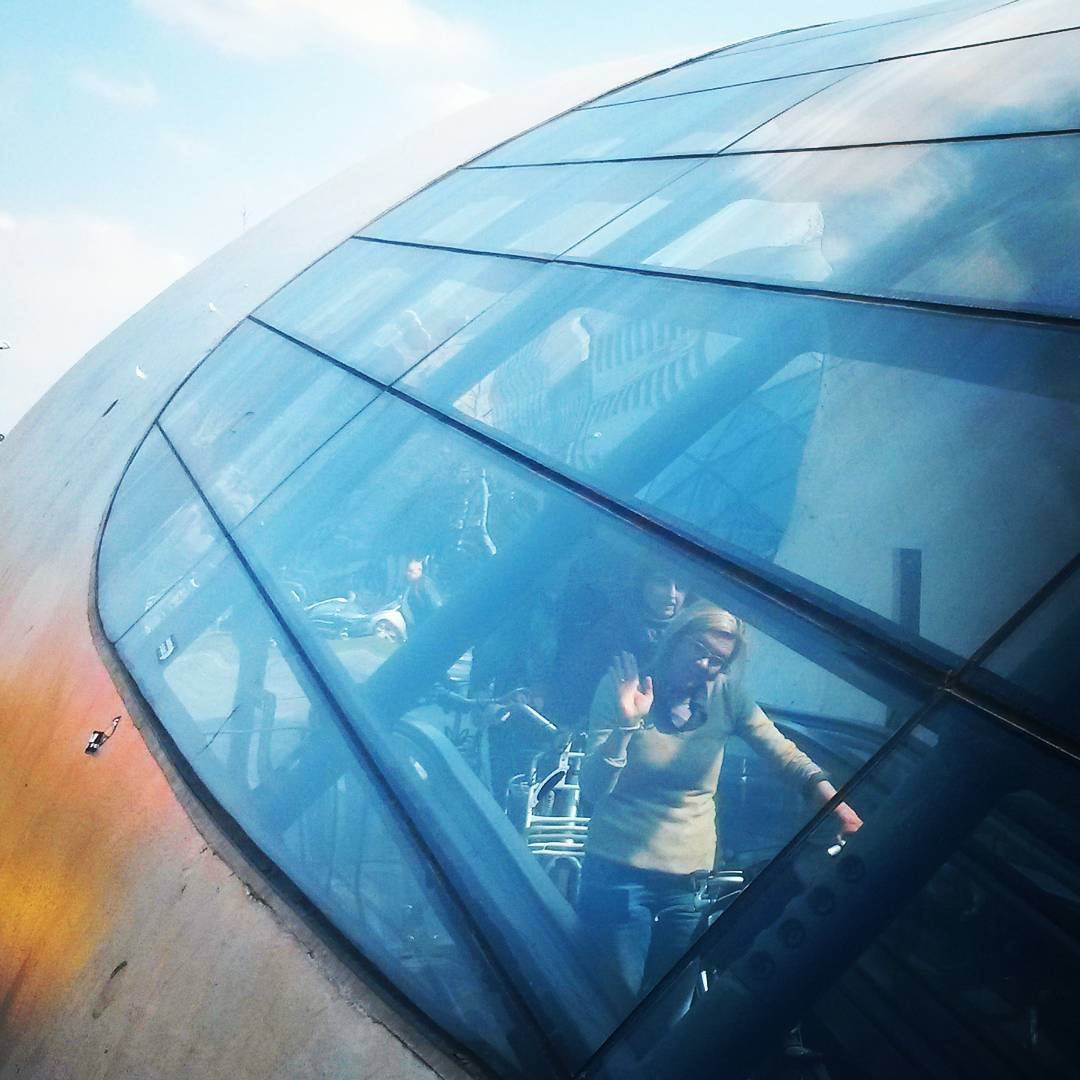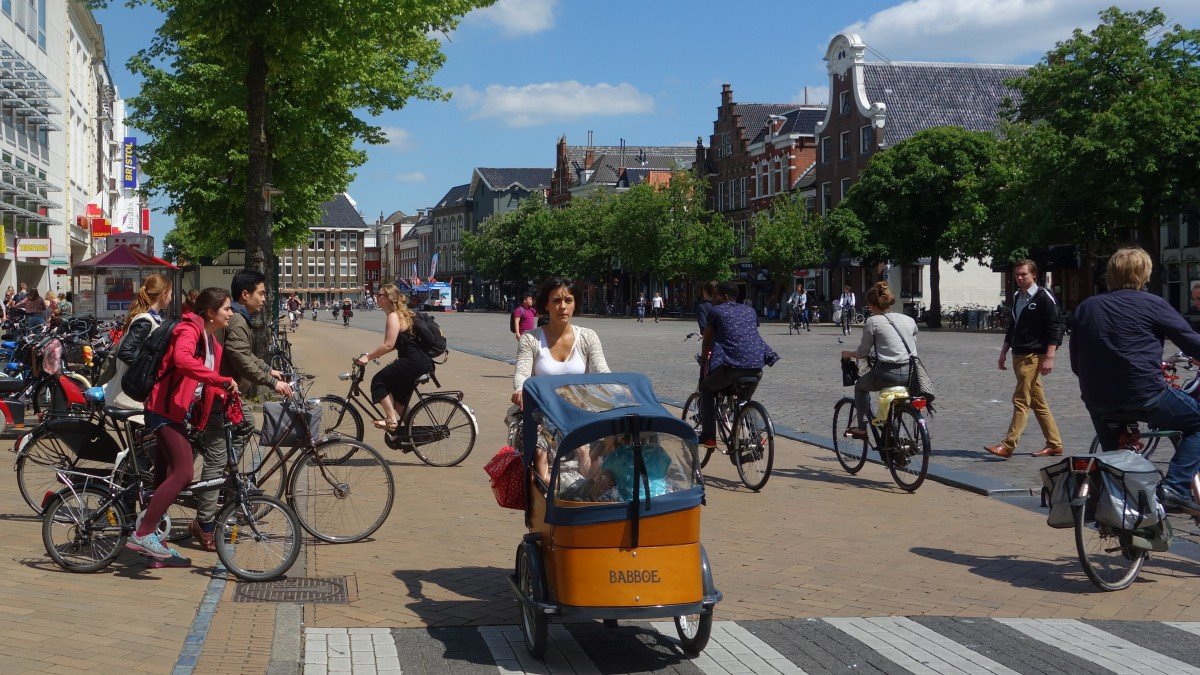
Back to Cycling Community main page …
Three Perspectives
Blog by Pieter van Wesemael, Professor in the chair of Urbanism and Urban Architecture at Eindhoven University of Technology and George Liu, Promovendus Architectural Urban Design and Engineering at Eindhoven University of Technology (2016-2020). The research tradition exploring concepts and strategies for cycling is limited, and the design toolbox for creating bicycle friendly environments remains relatively empty. There is still a long way to go (May 23, 2017)

Three perspectives on cycling
Cycling is perhaps as iconic for the Dutch landscape as the dikes, windmills, and waterways. It is the ordinary and ubiquitous nature of cycling which has undoubtedly contributed to its popularity as a means of daily transport, yet this may be the same reason that we still know relatively little about cycling itself. The research tradition exploring concepts and strategies for cycling is limited, and the design toolbox for creating bicycle friendly environments remains relatively empty. This is especially true when one compares knowledge about cycling with that of automobiles or public transport. Despite the unmistakable shift of interest in cycling over the last decades and the recent surge in cycling research, there is still a long way to go.
Following the same logic, the unremarkable nature of cycling may be the reason that we do not focus the discourse on bicycles as an interdisciplinary study. There seem to be at least three parallel discourses around bikes, from three disciplinary domains. Namely, the social sciences – containing health scientists and urban sociologists; the engineers – including civil engineers and traffic planners; and designers – comprising landscape designers and urban planners. These parallel discourses each have their own institutional silos of thinking, action frameworks, and practices. The social scientists focussing on the cyclist as a human socially embedded user of mobility, the engineer understanding cycling as one of the technological modalities of the urban traffic system, and the designer creating infrastructural space within the public domain for the auto mobility while largely ignoring the needs of cycling. It is clear that urban society would benefit greatly from a common discourse surrounding cycling and the stimulation of bicycle use, resulting in more sustainable, inclusive and healthy cities around the world. Let’s see how each of them could contribute to a more integral and holistic approach in the coming years anticipating ongoing technological innovation and socio-economic transition.
For civil engineers and traffic planners there is still a huge challenge to do extensive empirical research on cycling behavior in the city. To this day, our knowledge is still limited. New smart city technologies can make a significant contribution: citywide sensor networks and big data for large scale real-time observations to bring geographically localized cycling behavior in focus; mobile devices and persuasive technologies to nudge cycling behaviour; and Internet and digital communities to work with cyclists to create new shared initiatives to address cyclists’ needs. In this way, civil engineers and traffic planners could make an important contribution to the traffic technological innovation of the urban mobility system, enabling the city to serve as a technological living lab where natural experiments can be conducted.
For health scientists and sociologists, on the other hand, empirical research into cycling is already at the core of their research portfolio for quite some time. However, there is a renewed interest driven by a growing understanding of the positive impact of active lifestyles on public health and the importance of social interaction for community building and citizen engagement in public life. From their research, it is clear that a compact daily urban system with short travel distances to a variety of destinations is essential to promoting walking and cycling. In addition, these neighborhoods must provide opportunities for multi-purpose trips that conveniently serve the functions of daily life without an automobile. There is a clear opportunity for the social sciences to contribute to a deeper understanding of the correlations between active travel behaviour and the layout and design of the urban living environment. Since we know that our travel behaviour is mostly routine (and only exceptionally conscious and deliberate), and that these routines are shaped by two types of context – the peer group and the physical urban environment – there is an opportunity to deepen research into the correlations between peer group, physical environment and cycling behaviour.
For the urban designers, the issue of how to go beyond the car-oriented urbanism in favour of a walking and cycling friendly urbanism presents a real challenge. How can new urban strategies and concepts contribute to an exercise-friendly urban environment? In an age of inter-regional daily urban systems, old planning concepts like the neighborhood unit concept and the functional city have become obsolete. After all, the daily lives of most of us are no longer taking place in static patterns within the limits of the district or city. The challenge is to design local, small-scale and mixed urban districts which can facilitate every aspect of daily life by walking and cycling. This is true not only in the downtowns of existing cities, but also in their peripheral office districts, in their suburban districts, as well as in the surrounding recreational landscapes. In creating these spaces, designers should pay ample attention to the socio-psychological perceptions and needs of the cyclist and walkers for a vibrant, spontaneous, and scenic neighbourhood.
Moving forward, we should look into how smart city technology could contribute to a more optimal use of our infrastructure. We should look to reverse radically the trend of the last fifty years to prioritize automobile movement at the expense of public space. This new paradigm opens opportunities for urban designers to repossess the public domain through place making strategies for the pedestrian and cyclist by giving more space to public life, for playing and meeting, for socializing and gathering, and even for the hustle and bustle of the street economy. This change is of cardinal importance for advancing sustainable mobility in cities of the future, but also to creating resilient urban economies and socially inclusive urban communities.
Back to Cycling Community main page …
Acknowledgements
The Cycling Community emerged from the Fietscommunity (2013-2024), a Dutch project to strengthen and share cycling knowledge. The Fietscommunity has been working under the auspices of Platform31 (2013-2021) and Dutch Cycling Embassy (2022-2024). The Cycling Community is hosted since 2025 by Favas.net and managed by RVDB Urban Planning.
Are you interested in the Cycling Community, do you want to contribute, or do you need information? Please, contact the secretariat:
robvanderbijl@favas.net
The Cycling Community and Favas.net have made every effort to trace the creators of external images and photos. All texts and images © 2025 Favas.net / RVDB Urban Planning.

